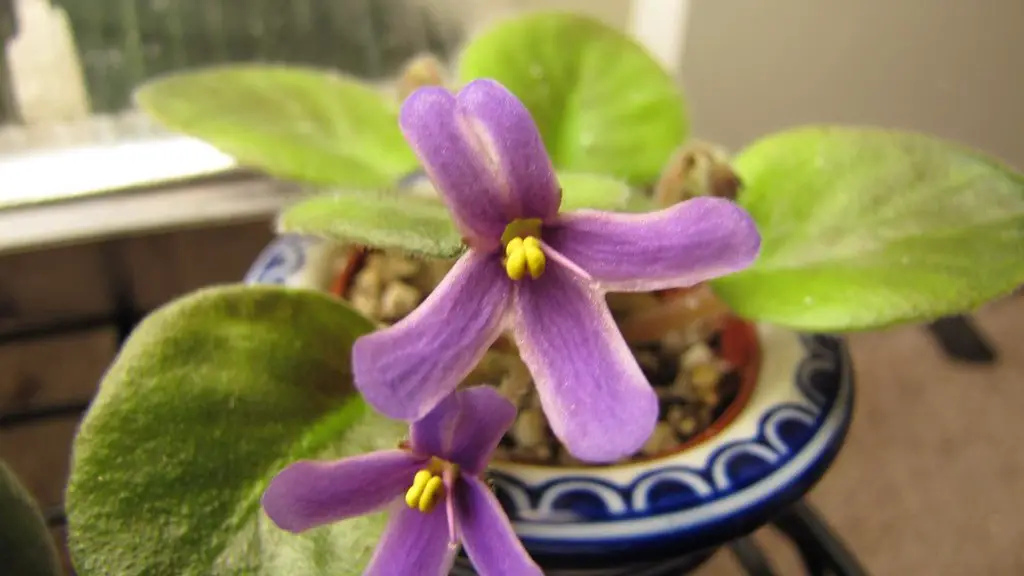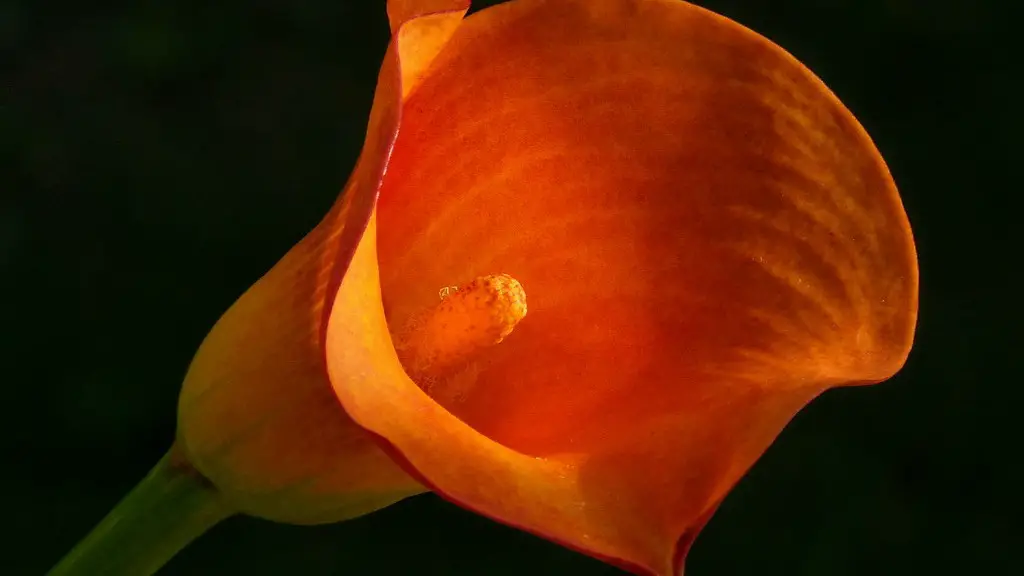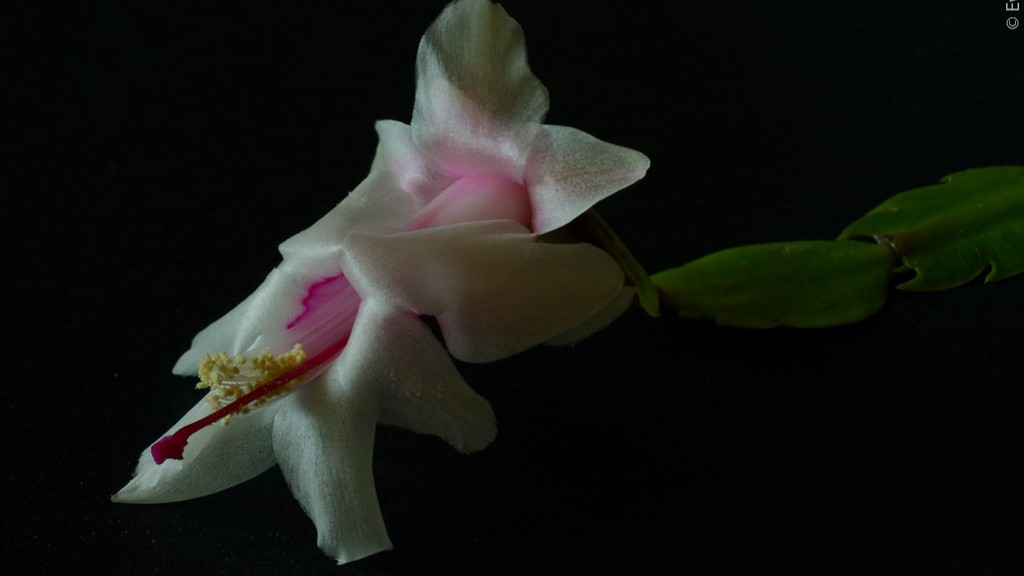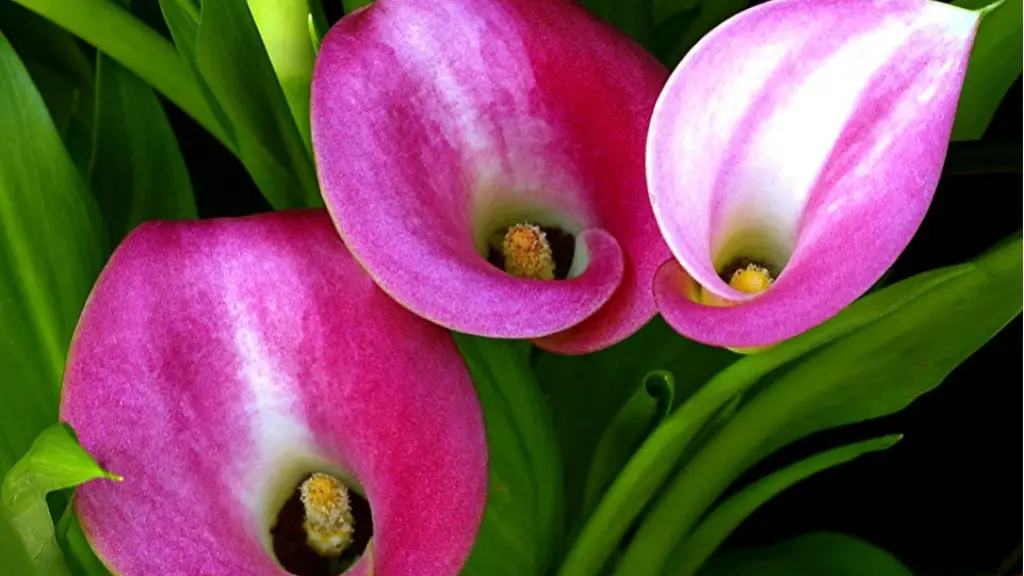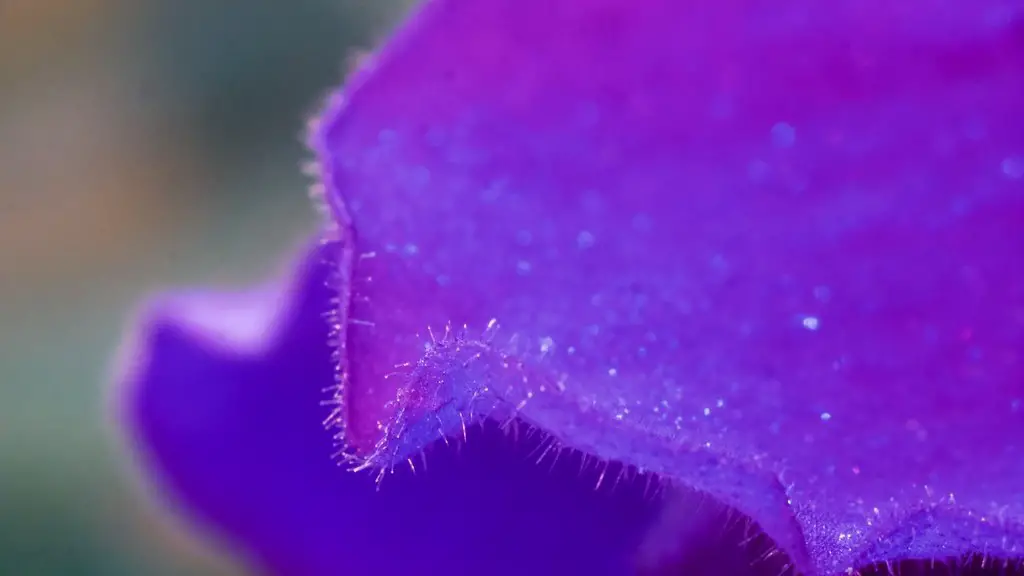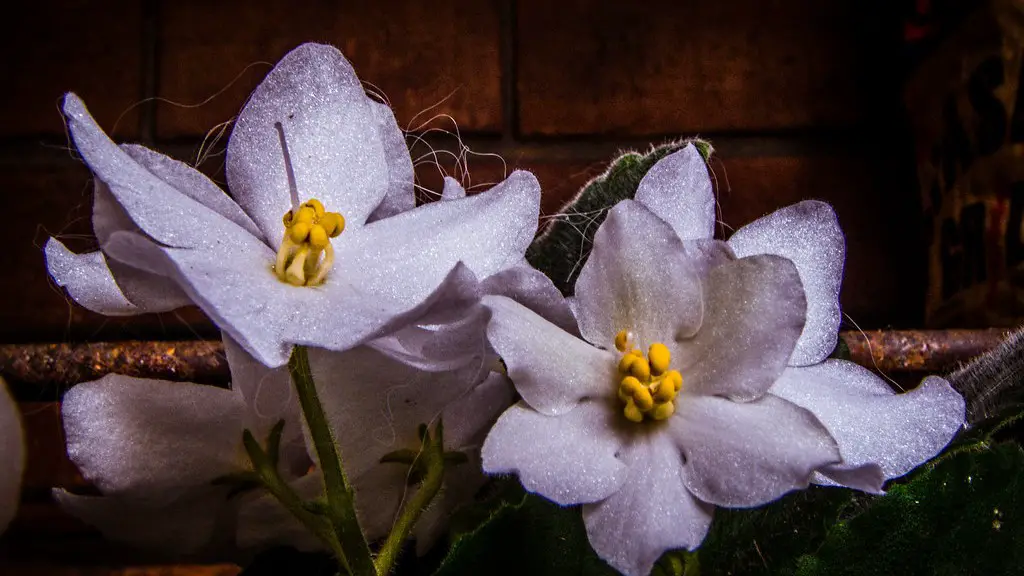The best place to African violets is in a spot that gets bright, indirect sunlight. They also do well under artificial fluorescent light. Be sure to water your African violet when the soil feels dry to the touch. Allow the water to run through the drainage hole in the bottom of the pot to ensure that the plant does not sit in water.
You can place African violets in a spot that gets indirect sunlight or in a room with fluorescent lighting.
What direction should African violets face?
African violets are beautiful plants that need indirect sunlight to thrive. Place them in a north- or east- facing window for best results, and be sure to rotate the pot once a week so all leaves receive light. Keep plants away from cold glass to prevent damage to the leaves.
A wicking system is a great way to make sure your African violets are never over watered. The way it works is you set up a container with a wick that goes down into the soil of the pot. The wick will absorb water from the container and deliver it to the soil as needed. This way, you only have to water the container once a week, and the plant will never be over watered.
Do violets like sun or shade
Violets are a versatile plant that can tolerate a variety of light conditions. Most violets will grow best in full sun to partial shade, but some woodland species can tolerate more shade. Violets can be planted in areas considered to be full shade, making them a versatile plant for any garden.
African Violets need bright to moderate indirect or filtered light to thrive. They can grow in direct light, but only early in the morning and late in the afternoon. If you place your hand over an African Violet receiving sunlight and can feel the heat or its too warm, then the light is too intense for the African Violet.
Should African violets be watered from the top or bottom?
It is best to water African violets from the bottom, so that the leaves do not get wet and avoid leaf spots. It is important not to use cold water; lukewarm or warm is preferred.
It is important to not mist the foliage of African violets as this may cause permanent leaf spotting. Use water that is room temperature and be sure to not saturate the crown of the plant as this may lead to crown rot.
Do African violets need bigger pots?
It’s important to choose a pot that’s on the smaller side when growing African violets. This will help the plant to stay slightly pot-bound, which is ideal for its growth. A professional tip is to choose a pot that’s 3-4 inches in diameter if you’re growing a standard African violet plant.
African violets have a very long lifespan and have been said to last up to 50 years. Repotting them is so important due to their long lifespan. There are a few key things to remember when repotting African violets.
1. Choose the right pot. The pot should be slightly larger than the current pot, with drainage holes.
2. Use the right soil. African violet potting mix is best, but you can also use a well-draining, slightly acidic potting mix.
3. Be careful with the roots. Gently loosen the roots and untangle them before replanting in the new pot.
4. Water well. Water African violets thoroughly after repotting.
How do I get my African violets to bloom again
If you want your African violet to bloom again, here are 8 ways to make it happen:
1. Let There Be Light – African violets need a lot of light to bloom, so make sure it is getting plenty of bright, indirect sunlight.
2. Turn Up the Humidity – These plants love humid conditions, so mist it regularly or set it on a pebble tray.
3. Replenish Essential Nutrients – Every few weeks, fertilize your plant with a water-soluble fertilizer designed for blooming plants.
4. Keep it Pleasant – African violets prefer temperatures around 70 degrees Fahrenheit, so keep it away from drafts and heat sources.
5. Choose the Right Soil – Use a soil mix that is well-draining yet holds moisture, such as one specifically for African violets.
6. Protect From Pests & Disease – Keep an eye out for pests and diseases, and take action immediately if you see any.
7. Constrict the Roots – Once your plant blooms, stop watering it as much to let the roots dry out a bit. This will encourage it to bloom again.
If you’re looking for the best pots for African violets, we’ve got you covered. From self-watering pots to ceramic pots with saucers, we’ve rounded up the best options on the market.
Self-watering pots are a great option for African violets, as they help to keep the soil moist and help prevent the plant from becoming over-watered. The Mkono 3 Pack Self Watering Plastic Planter is a great option, as it comes with three self-watering pots in different sizes.
For a ceramic pot with a saucer, we like the Blue Self Watering Ceramic Planter. This pot is perfect for African violets, as it has a built-in self-watering system and a drainage hole to help prevent over-watering.
If you’re looking for an all-in-one self-watering pot, the Aquaphoric Self Watering Planter is a great option. This pot comes with a wick that draws water from the reservoir up into the soil, keeping the plant hydrated.
For a self-aerating pot, the Self Aerating Self Watering Pot is a great option. This pot has a built
What do African violets symbolize?
African violets are beautiful flowers that have a deep meaning. They are a symbol of devotion, commitment, and faithfulness. No matter what the cause is, these flowers represent loyalty and sticking to something through thick and thin. The next time you see an African violet, think of the meaning behind it and the hardworking person that it represents.
It can be difficult to find the perfect balance when it comes to African violets, as they need to be slightly crowded in order to thrive, but can easily become overwhelmed if there is too much crowding. African violets are beautiful flowers, but if they have too many leaves, they may withhold blooming or stop growing altogether. If you find yourself with an African violet that seems to be struggling, try loosening the crowded conditions a bit to see if that helps the plant to recover.
How often should you feed African violets
It’s important to fertilize your African Violet regularly to keep it healthy throughout the year. During the spring and summer, you should fertilize your African Violet once every 14 days. In the fall and winter, you shouldn’t fertilize the plant at all to prevent over-fertilizing.
African violets need to be watered from the bottom so the roots can soak up the water. It is important to keep the roots of the plant moist but never soggy. Watering for an hour or so from the bottom will help to keep the water out of the crown of the plant. African violets like warmer water, around 70 degrees.
Should African violets be watered once a week?
African violets are relatively easy to care for, and only need to be watered when the soil is almost dry. Usually you’ll only need to water them about once a week, but this can vary depending on conditions like the temperature, the season, and the size of the African violet’s container. The best way to water African violets is by bottom watering, which helps to prevent leaf scorch and encourages strong root growth.
If you’re unsure about the quality of your tap water, it’s best to err on the side of caution and use filtered or distilled water for your African violets. This will help to ensure that your plants are getting the best possible start in life and are less likely to experience any problems down the line.
Warp Up
Assuming you would like tips on how to care for African violets:
African violets (Saintpaulia) are attractive, floriferous plants that are commonly grown as houseplants. While they are not particularly fussy about growing conditions, they do prefer bright, indirect sunlight and evenly moist (but not soggy) soil.
The best place to African violets is in a bright room with indirect sunlight. They also do well in windowsills and greenhouses.
